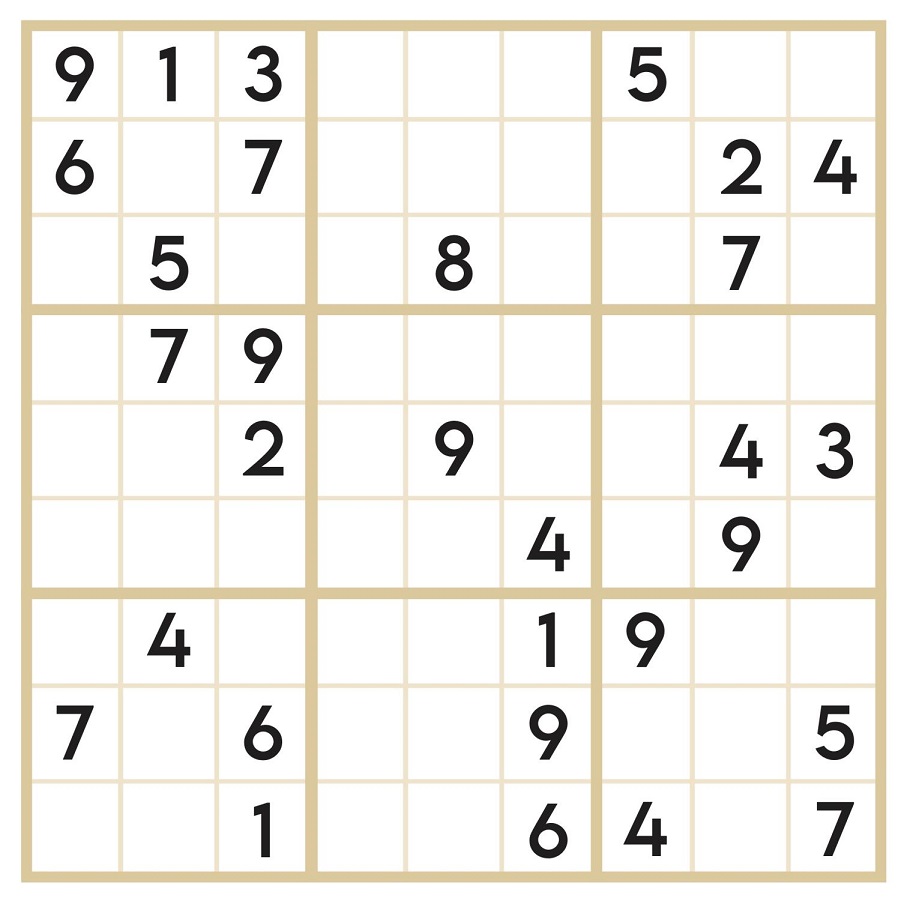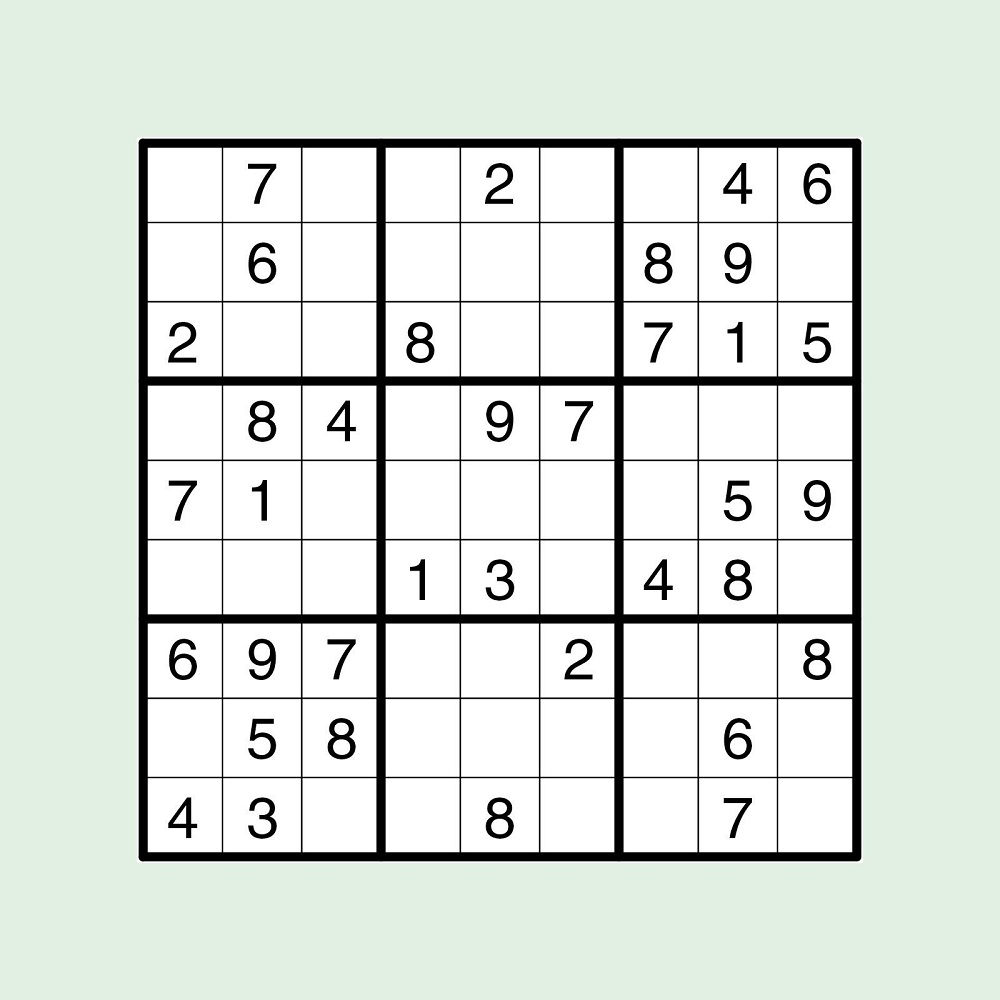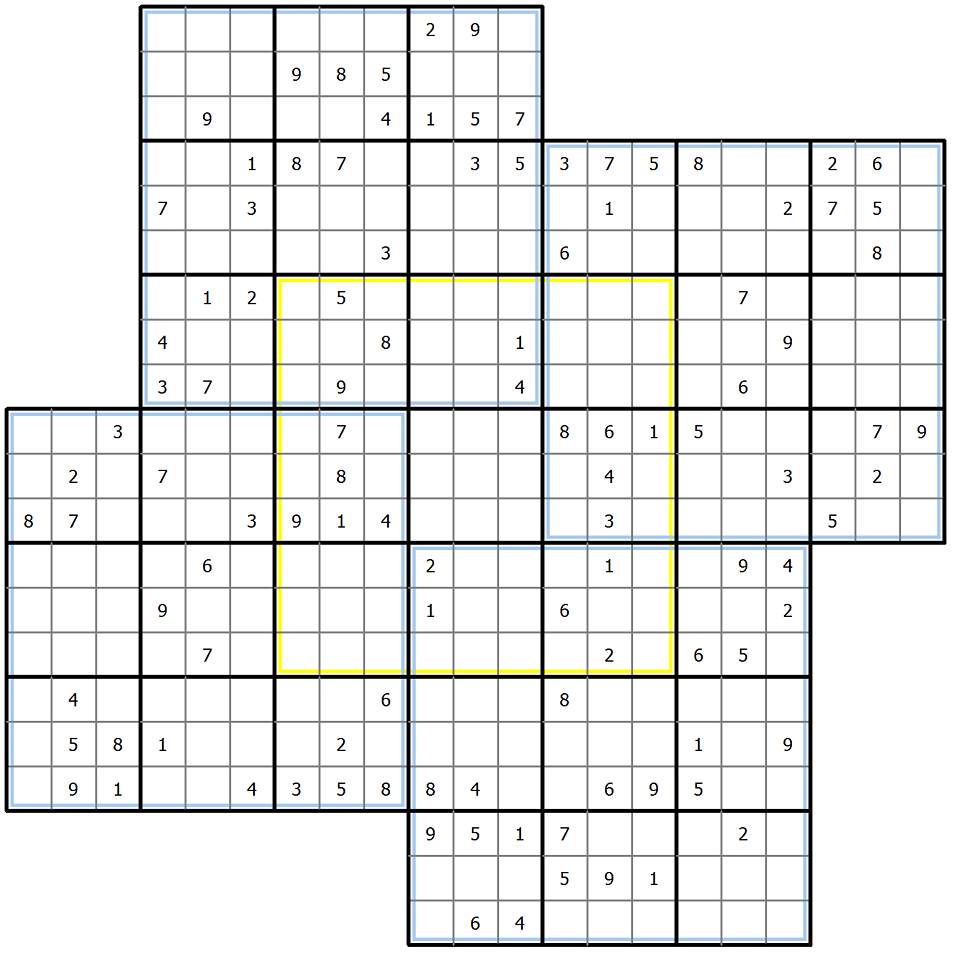Identify the Ideal Starting Point
When diving into a Sudoku puzzle, pinpointing where to begin is crucial. Start by eyeing sections densely filled with given digits. This could be any row, column, or 3×3 grid within the Sudoku. High-digit areas limit the possibilities for remaining empty cells, simplifying the initial moves. The logic is simple: fewer empty cells equate to fewer potential numbers to juggle.
Moreover, notice which numbers dominate the grid. If your puzzle is plentiful in 8s but scarce in 3s, focus on placing the 8s first. These often offer a clearer path for progression than trying to slot the rare numbers. The key lies in leveraging the abundance of specific digits to quickly anchor the puzzle, setting the stage for easier problem-solving as you proceed.
Remember, these starting tips are just the launch pad for your Sudoku journey. They lay out the foundational steps that springboard you into the deeper strategies and techniques necessary to conquer these brain-teasing grids. As you persist and practice, these starting moves will become instinctual, threading seamlessly into your overall puzzle-solving approach.
Utilize Single Candidate Identification
Moving to the next phase in enhancing your Sudoku skills involves understanding single candidate identification. This technique is vital, especially when you aim to determine the one possible candidate for a cell based on the exclusion of other numbers. Here’s a breakdown of how to effectively apply this method:
- Examine each cell closely: Begin with cells that are heavily constrained by numbers already placed in their row, column, or 3×3 block. Cells surrounded by many numbers often have only one feasible option left.
- Apply logic to eliminate alternatives: For every empty cell, rule out numbers present in the same row, column, and block. This narrowing down process helps pinpoint the single valid digit.
- Confirm the only possible candidate: Once you’ve excluded all but one number, you can confidently insert that remaining digit into the cell. This approach not only simplifies the grid but also propels you forward in solving the puzzle.

Implementing the single candidate identification efficiently allows you to speed up your solving process and reduces the chances of mistakes. As you get better at Sudoku, this technique will become an instinctual part of your strategy, leading to quicker and more satisfying puzzle-solving experiences.
Develop Effective Scanning Techniques
To further sharpen your Sudoku solving tactics, mastering effective scanning techniques is essential. These strategies help to quickly identify which areas of the puzzle to tackle next, therefore improving your efficiency. Here is how you can develop your scanning skills:
- Focus on one area at a time: Instead of becoming overwhelmed by the entire grid, concentrate on scanning individual rows, columns, or 3×3 blocks. This narrows your perspective to more manageable sections.
- Use a systematic approach: Adopt a pattern for scanning, such as left to right or top to bottom. Consistency in your approach will help you to recognize patterns and solve faster.
- Recognize heavily populated intersections: Spot where a row and column intersect with many numbers. These intersections are likely to have fewer options, making them a good starting point.
- Learn to switch focus: If a certain area isn’t yielding results, move on to another part of the grid. Effective scanners do not fixate on one spot for too long. It’s all about fluid movement and adaptability.
By incorporating these scanning methods, you’ll enhance your ability to filter through the noise and spot opportunities more swiftly. As you practice these techniques, they will become second nature, significantly boosting your Sudoku efficiency and helping you on how to get better at Sudoku.
Avoid Getting Stuck on One Area
When tackling a Sudoku puzzle, a common mistake is to fixate too long on one area. This often occurs when a particular section of the grid seems challenging or complex. However, this approach may hinder your progress rather than help it. Here’s how to avoid getting stuck and improve your overall efficiency:
- Shift your focus frequently: If you spend too much time on a part of the grid without making progress, move on. Changing your focus can provide new perspectives and solutions.
- Identify grid interdependencies: Understand that the placement of digits in one section affects the possibilities in other sections. Sometimes, solving easier parts first can unlock the answer to more challenging sections.
- Apply cross-hatching techniques: This method helps you compare possibilities across rows and columns, allowing you to identify which numbers can or cannot fit in specific cells.
- Use a timer for practice: Set a limit for how long you focus on one area during practice sessions. This will train you to distribute your attention more evenly across the grid.
By mastering the skill of distributing your focus and effectively managing your time, you ensure a smoother solving process and better outcomes in your Sudoku games. This approach not only accelerates your solving speed but also enhances your overall enjoyment of the puzzle.
Maintain Puzzle Momentum
Maintaining momentum is essential in Sudoku, as it helps in solving puzzles more efficiently. Here’s how you can keep the momentum going and avoid getting bogged down:
- Place digits strategically: Start by filling in sure numbers. This will open up more possibilities for other cells.
- Keep scanning: After placing each number, scan rows, columns, and 3×3 blocks again. New opportunities may have emerged.
- Utilize cascade solving: Placing one correct digit often leads to a series of other digits naturally falling into place. Look for these cascading opportunities to maintain flow.
- Focus on progressible sections: Some parts of the grid will have more clues and are easier to solve. Tackle these sections first to build up solving momentum.
By continuously moving forward with these strategies, you will keep the puzzle’s momentum, which is crucial for solving more complex grids more quickly. This practice not only enhances speed but also boosts confidence as the puzzle gradually becomes clearer.
Implement Pencil Marking for Candidate Tracking
In the realm of Sudoku, pencil marking is an invaluable asset for keeping track of potential digits for each cell. This strategy can enhance your problem-solving efficiency and accuracy. Here’s a breakdown of how to effectively implement pencil marking techniques:
- Start with empty cells: Focus on cells without any digits and consider the possibilities. Use a pencil to lightly mark potential numbers in these cells.
- Apply process of elimination: As you pencil in candidates, eliminate numbers that cannot fit based on other cells’ digits in the same row, column, or block.
- Refine choices with new information: Each time you place a digit, revisit your pencil marks. Remove any options that are no longer viable.
- Spot patterns and pairs: Pencil marks may reveal patterns like naked pairs, which can help you make further eliminations and solve the puzzle faster.
- Keep it neat: Ensure your pencil markings are clear and small. This will prevent confusion and allow for easier adjustments as you progress.
Pencil marking can transform a daunting grid into a navigable challenge, guiding you towards the solution with confidence. Integrating this technique into your Sudoku strategy will aid in your pursuit of how to get better at Sudoku, ultimately boosting both your skill and enjoyment of the game. Remember, consistency is key; the more you practice pencil marking, the more second nature it will become.
Detect Naked Pairs to Simplify Choices
Detecting naked pairs is a game-changer in your Sudoku strategy. Here is a step-by-step guide to master this technique:
- Look for pairs in a unit: Focus on a single row, column, or block. Find two cells within this unit that only have the same two potential digits.
- Eliminate duplicates from peers: Once a naked pair is found, remove those two numbers from the possible candidates of all other cells in the same unit.
- Re-evaluate remaining cells: With those numbers out of the equation, re-examine other cells. They may have new single candidates to fill in.
- Confirm naked pairs properly: Ensure the naked pair is exclusive to those two cells in the unit; else, it is not a true naked pair.
- Repeat the process: Continue searching for naked pairs throughout the grid. Each discovery can significantly reduce complexity.
- Track your findings: Keep a record of naked pairs identified. This helps avoid confusion and ensures accurate eliminations.
This strategy is a powerful tool for simplifying choices by revealing forced digits, which then propel your solving process forward. As with other techniques, practice makes perfect. The more you use it, the more intuitive recognizing naked pairs will become. By incorporating this approach in your puzzle-solving arsenal, you will notice a marked improvement in how to get better at Sudoku.
Discover Hidden Pairs to Narrow Down Options
Hidden pairs, like their counterpart naked pairs, are crucial for advancing your Sudoku skills. By mastering the detection of hidden pairs, you narrow down your options and edge closer to the solution. Here’s how you can harness the power of hidden pairs:
- Identify potential hidden pairs: Look for two cells in a row, column, or block that share the same two potential digits, even if other digits are also possible in these cells.
- Assess exclusivity: If no other cells in the unit can contain these two numbers, you’ve discovered a hidden pair.
- Clear out other candidates: You can then remove these two numbers from the list of possible candidates in those exclusive cells.
- Update your grid: The discovery of hidden pairs often opens new possibilities. Re-scan the affected rows, columns, or blocks to update your choices.
- Repeat and refine: Continue to search for hidden pairs as you solve the puzzle, and refine your choices as new digits are placed.
Understanding hidden pairs is another piece in the puzzle of how to get better at Sudoku. With practice, spotting these elusive pairs will become quicker, aiding in solving those particularly stubborn puzzles. Remember to keep practicing; familiarity with the game’s patterns is your greatest ally in improving your Sudoku proficiency.
Learn and Apply Advanced Sudoku Strategies
As your Sudoku skills grow, it’s important to learn and use advanced strategies. These complex techniques can make challenging puzzles easier to solve. Here are some advanced tips:
- Master X-Wing: This pattern occurs when two rows (or columns) each contain a potential number only in the same two columns (or rows). Recognizing X-Wing patterns allows you to eliminate other possibilities.
- Explore Swordfish technique: Similar to X-Wing, but involves three rows and columns. It helps in removing candidates from other cells.
- Utilize XY-Wing: This strategy finds a set of three cells forming an ‘L’ or ‘T’ shape, which share some potential numbers. It leads to eliminating options in other cells.
- Look for Unique Rectangles: If you spot a rectangle with only two possible digits, certain eliminations can be made based on Sudoku’s rule of uniqueness.
- Consider Color Chains: Also known as bi-value universal grave (BUG), this tactic involves coloring bi-value cells to see the chain’s effect across the grid.
- Study Jellyfish pattern: An extension of Swordfish, the Jellyfish is a rare but powerful technique that can resolve multiple cells at once.
These are not simple tricks; they require practice and a deep understanding of the game. Work through puzzles that challenge you to use these methods. Over time, your ability to recognize these patterns will greatly improve your Sudoku gameplay.
Always remember, there’s no substitute for practice. Keep challenging yourself with harder puzzles to become a Sudoku master. The more you apply these advanced strategies, the more intuitive they’ll become, and the better you’ll get at Sudoku.
Adopt a Logical Approach with the Process of Elimination
When playing Sudoku, relying on a logical approach using the process of elimination is crucial. This method involves systematically eliminating impossible numbers from the grid to reveal the correct ones. Below are the steps to master this technique:
- Start with known numbers: Identify the cells where the numbers are already given. This gives a clear starting point.
- Assess each cell’s possibilities: Focus on an empty cell and examine the numbers already present in its row, column, and 3×3 block. Eliminate these from consideration for that specific cell.
- Narrow down choices: After considering the direct exclusions, determine which numbers could still potentially fit. If only one number remains, place it confidently.
- Use exclusion to your benefit: For cells where multiple numbers are possible, keep track of which numbers get placed nearby. Often, placing one number will directly rule out possibilities in adjacent cells.
- Think ahead: Before placing a number, consider the broader impact it will have on the grid. A correct placement should help reduce the possibilities in other cells, not increase them.
By continuously applying the process of elimination and ensuring that each step logically leads to fewer possibilities, you enhance your Sudoku skills effectively. Practice is key; the more you apply these principles, the sharper your problem-solving abilities will become. Remember, guessing can lead to mistakes—rely on logic and precision to solve puzzles accurately.




